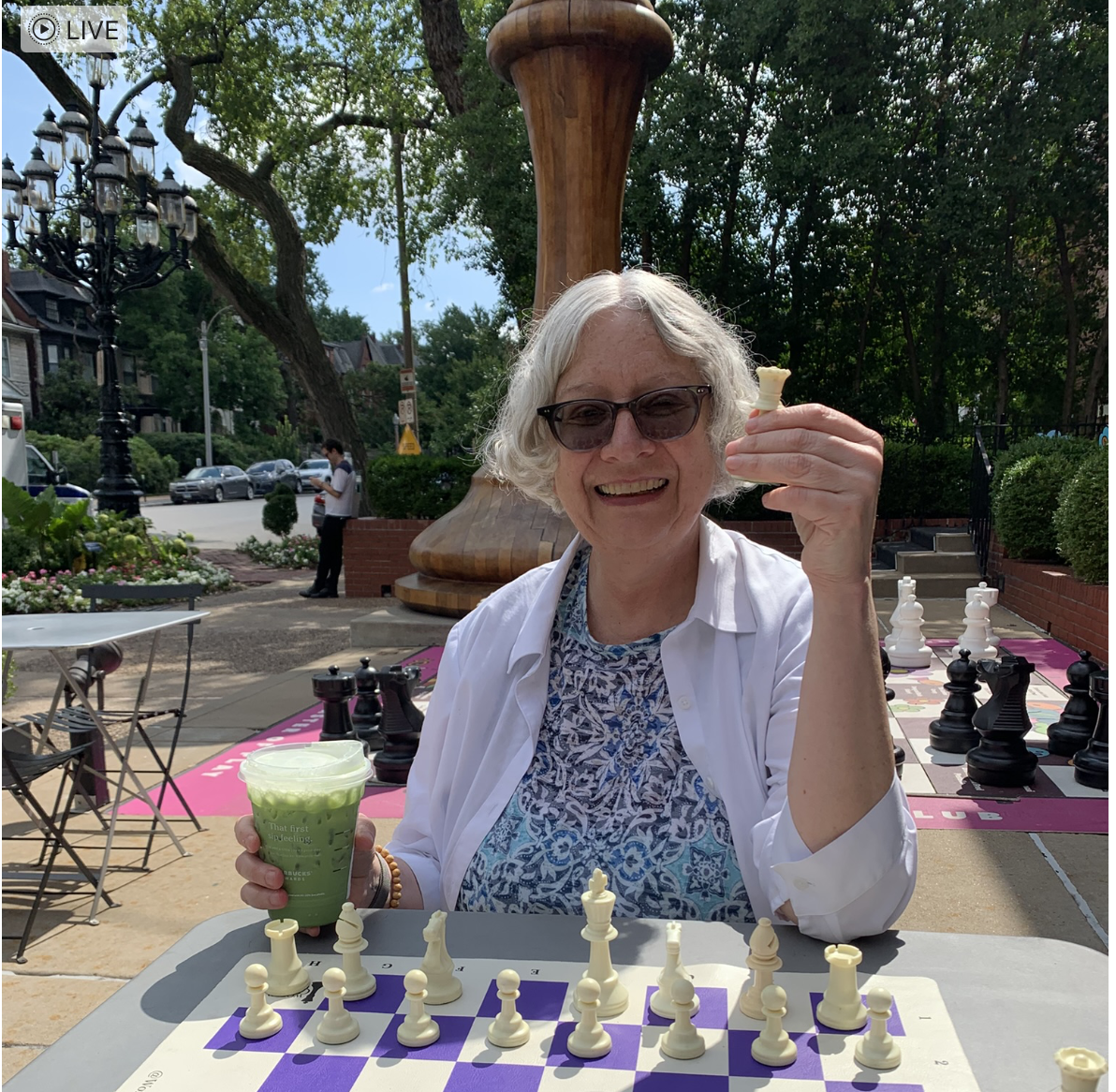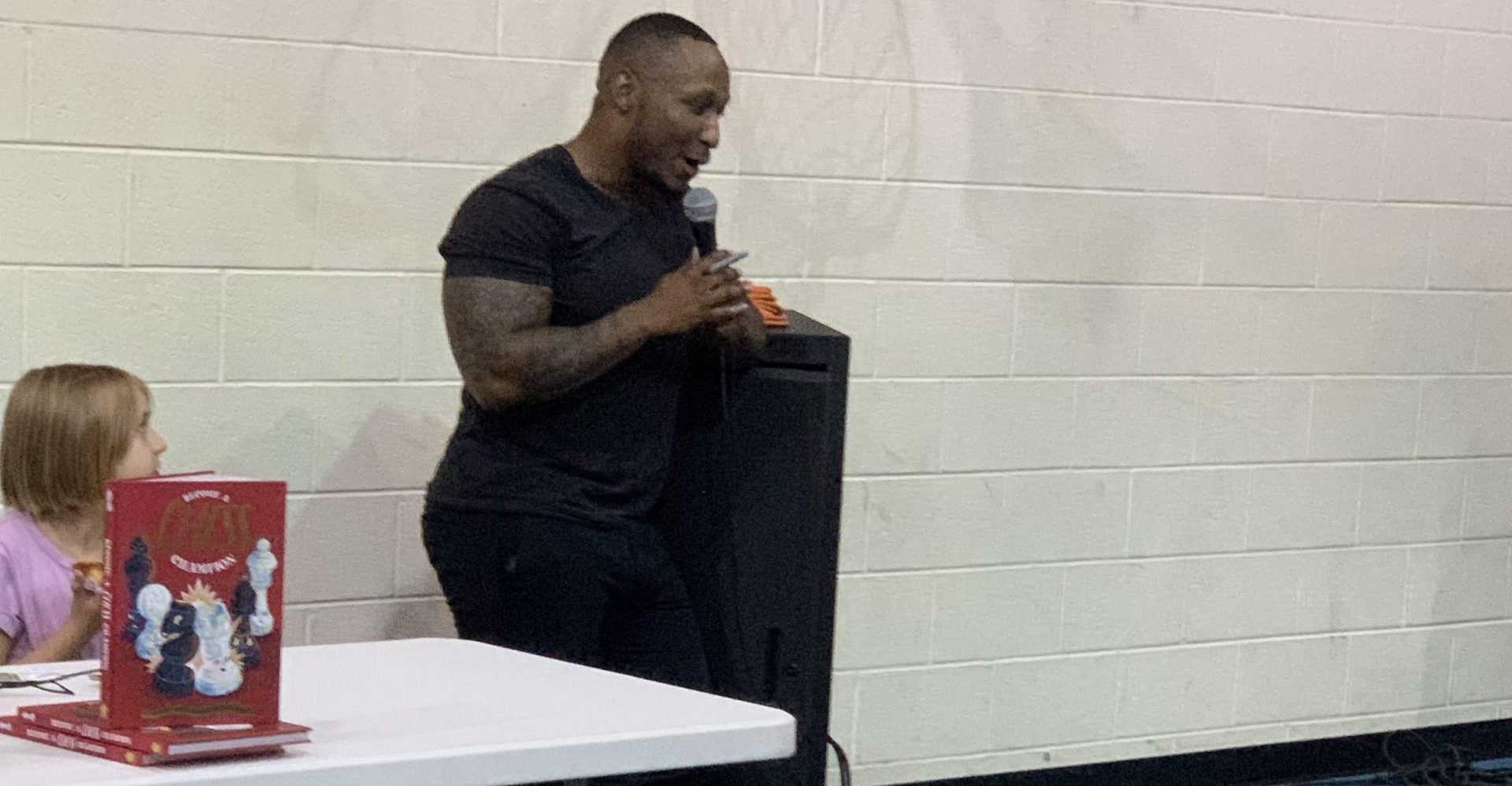It has been quite a while since I posted, but my chess life has gone on as usual (aka I play, I analyze, I take lessons, I feel I am a better player, I don’t achieve the rating of a better player). I did realize a longtime chess dream in August: I traveled to the World Chess Hall of Fame and Galleries in St. Louis! I had wanted to go since the first time I watched a chess tournament broadcast from there several years ago, when I first got into chess, and I was able to convince a friend who has just dipped her toes into the chess waters to accompany me. If I had to choose a highlight, it was playing chess outside right in front of the museum, by the world’s largest chess piece. A Starbucks is conveniently located right there, so we were able to nurse a cold beverage while playing outside in August in St. Louis.
There are two buildings, one housing the galleries and shop, and the other housing the St. Louis Chess Club. We enjoyed a wonderful curator tour of the exhibit that was showing at the time, on chess variants. After that we made the first of two expeditions to the shop, where I bought a couple of nice portable chess set cases and also notebooks and pens for the members of my women’s chess group, which delighted them.
Next, it was across the street to The Club. There was a tournament going on, so I had hoped to be able to watch in a classroom there with commentary by their grandmaster in residence, as is always advertised during the breaks when you watch their tournaments on YouTube. Of course I had also hoped to catch a glimpse of one of the greats during the breaks. Alas, the tournament venue was being renovated, so the action was in some other part of the city. I was tempted to head over there, but I was told that it wouldn’t be set up for spectators. But that’s okay; the renovations are now done, and I want to go back sometime anyway.
Also this summer I took a look at two new courses that ChessGoals has developed. I purchased one, and they provided me with the other as a review copy. Each costs only $9. They aren’t chess courses in the traditional sense, as in helping you to master opening theory, endgame technique, or strategy. Rather, they are about how best to study chess. One is How to Study Chess Effectively with Limited Time (“Study chess smarter with just 20 minutes a day”), and the other is Chess Habits That Stick (“Build consistency and motivation that lasts”). I applaud ChessGoals for producing this kind of content, which I think many of us need, whether we realize it or not. Each course has one hour of video lessons as well as PDFs and quizzes. The quizzes help reinforce your learning, and the PDFs are super helpful because they contain the structured forms ChessGoals has already devised for you to record all the data necessary to help you study effectively and create habits that stick. I have created various tracking spreadsheets myself, but never stick to them, but I know that studies have shown that if we pay for something we tend to be more invested in using it, so you are getting accountability for your $9.
Many of us spend the majority of our chess time studying alone and playing strangers online, with few or no opportunities to talk to someone about chess, including how we should be approaching it for the best results. Watching these videos with NM Matt Jensen’s calm, clear instructions felt like finally finding the right person with whom to have this conversation–for just a little more than the price of a latte.
[An Older Woman’s Chess Journey is a proud affiliate of ChessGoals–if you use the link here to purchase from them and enter “dawn” as the coupon code, you will receive 30% off their courses, and I will receive a commission. Purchasing via an affiliate link doesn’t cost you any extra, and I only recommend products and services I trust.]








